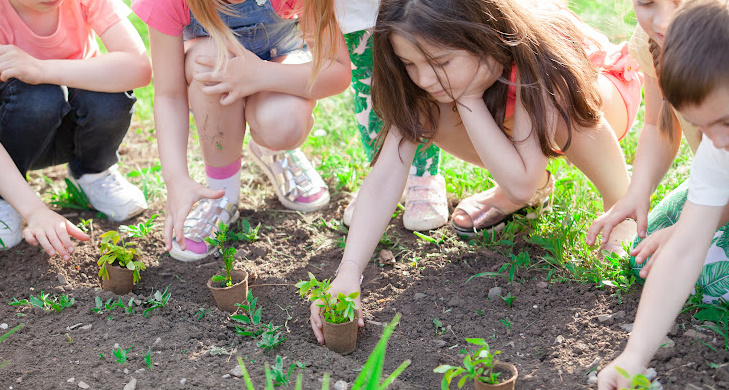Civilizations are often built upon solid agricultural frameworks. Without regular access to dependable food sources, most other areas of a thriving society quickly lose their proverbial footing. Learning where food comes from, and how to grow and raise your own sustainable food sources, can be an empowering and inspiring learning experience for people of all ages. And, it can be incredibly motivating to see the joy kids exude when they watch new plants grow or baby chickens hatch!
Projects such as gardening, beekeeping, sprouting, foraging, and raising chickens come with a whole host of practical knowledge and hands-on life skills that are gained along the way. With agriculture projects, participants learn by doing, and this can lead to an increased sense of confidence and resilience in children who are exposed to gardening and food-raising.
If you are considering starting your own home garden, then you may want to get the entire family involved in the day-to-day tasks. Both kids and adults stand to benefit from the learning potentials. It’s never too early to meaningfully engage with agriculture, or to contemplate future personal options and career pathways in the field. So, let’s take a look at some easy-to-integrate steps for getting started!
Step #1: Make kids part of the planting process with your outside agriculture projects.
Most children can enjoy this part of the agricultural experience, as planting seeds means exploring dirt and digging holes. And it only takes a moment for a child to realize the dirt isn’t just some dead topsoil… dirt is a living biome. There’s so much that lives in just one square inch of what many of us simply refer to as “dirt.” In fact, if you are fostering a sense of innate curiosity, most people of all ages will tend to delight in this aspect of gardening and growing.
By learning where to dig, when to dig, how far apart to make holes, and how deep a spot should go into the soil, everyone involved is actually engaging in a bit of basic botany. All of this displays an understanding of what crop is being sown and the needs of the seeds (or seedlings) to get started. Planting seeds and seedlings can also teach spatial reasoning and depending on the area you have available to you, creative problem-solving, too. These skills are relevant to most agricultural projects, whether personal or professional. And today’s micro-greens growers and gourmet food-crop producers are keenly aware of healthy soil needs and the importance of crop planning and proper planting.
Step #2: Encourage everyone in the family to taste-test the results of your agriculture efforts.
Many of us would benefit from more fruits, herbs, and vegetables in our diets, and kids are no exception. It can be challenging for people of all ages to choose fresh produce over the lure of fast food. Gardening, however, can heighten the desire of the participants to want to taste the fresh food (after a quick rinse to remove any of the dirt, of course). And, by getting both kids and adults used to taste-testing different fresh foods from our own agricultural efforts, the palate of each individual becomes more nuanced. Over time, it becomes easier to distinguish the herbal notes unique to basil in a myriad of entrees, as just one example. Many chefs come to their professional field through a love of fresh foods and perform strongly thanks to a well-educated palate.
Step #3: Try sprouting indoors when it’s too cold for outside agriculture projects.
Children and adults seem to love watching sprouts grow in clear mason jars. It’s a way of growing your own super-nutritious food that is quick, easy, and clean. Kids often seem fascinated by the fast-growing process of sprouting, and by participating in the daily rinsing and caring of the young plants. Being involved on this daily level often encourages kids to become more likely to want to eat the sprouts, too. Plus, an agricultural act as simple as sprouting over the winter months can lead people to want to grow more plants by the spring season that follows.
Adults often like the ease and cost-effectiveness of sprouting, not to mention the obvious dietary benefits, as well. And, so long as you have a moderately sunny windowsill or a good grow bulb arrangement, it can be done anytime, anywhere.
No matter what foods you choose to plant or raise, the odds are good that both children and adults will enjoy, learn, and personally grow from the overall agricultural experiences. Participating in agriculture at any level of investment can also foster a deep love of plants, animals, and the natural world. Plus, growing your own food can help you save a bit of money at the grocery store and create additional opportunities for quality time with the family!
Considering agriculture as a career? Check out the Stride Insights article, Becoming An Agriculture Entrepreneur!
And, to find out more about Stride Career Prep’s online programs in critical industries, be sure to visit the site: https://www.k12.com/stride-career-prep.html
Considering enrolling your child in a Stride K12 school, for further education and career prep options and experiences? The best time is always now!





































